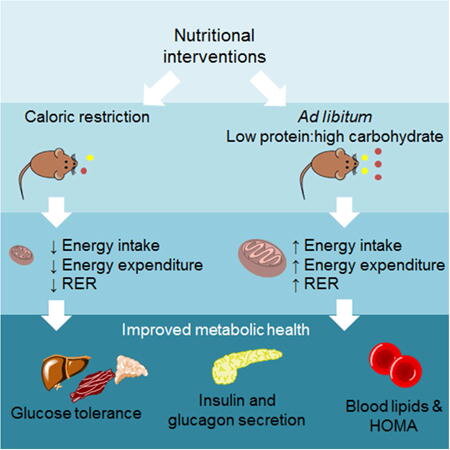A low-protein diet is a diet in which people decrease their intake of protein. A low-protein diet is used as a therapy for inherited metabolic disorders, such as phenylketonuria and homocystinuria, and can also be used to treat kidney or liver disease. Low protein consumption appears to reduce the risk of bone breakage, presumably through changes in calcium homeostasis...
Low-protein diets mimic many of the effects of calorie restriction but may engage different metabolic mechanisms.[14] Low protein diets rapidly reduce fat and restores normal insulin sensitivity to diet-induced obese mice.[15] Specifically restricting consumption of the three branched-chain amino acids leucine, isoleucine and valine is sufficient to promote leanness and improve regulation of blood glucose.[16] Restriction of isoleucine, but not leucine or valine, is required to observe the full beneficial effects of a low protein diet.[17]
The diets of humans living in some of the Blue Zones, regions of enhanced numbers of centenarians and reduced age-associated morbidity, contain less than 10% of energy from protein,[18] although reports on all the Blue Zones are not available. None of the diets in these regions is completely based on plants, but plants form the bulk of the food eaten.[19] Although it has been speculated that some of these populations are under calorie restriction, this is contentious as their smaller size is consistent with the lower food consumption.[20]...
Low-protein diets to treat kidney disease include the rice diet, which was started by Walter Kempner at Duke University in 1939. This diet was a daily ration of 2,000 calories consisting of moderate amounts of boiled rice, sucrose and dextrose, and a restricted range of fruit, supplemented with vitamins. Sodium and chloride were restricted to 150 mg and 200 mg respectively. It showed remarkable effects on control of edema and hypertension.[23][24] Although the rice diet was designed to treat kidney and vascular disease, the large weight loss associated with the diet led to a vogue in its use for weight loss which lasted for more than 70 years. The rice diet program closed in 2013.[25] Other low-protein starch-based diets like John A. McDougall's program continue to be offered for kidney disease and hypertension.
Last edited:

